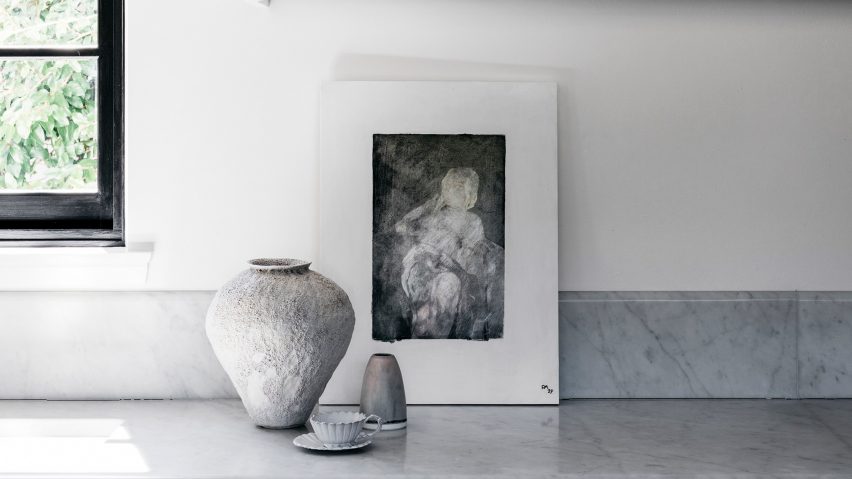
Arent & Pyke updates home for a gallerist with monochromatic rooms
Black and white living spaces feature in this 1930s Sydney home designed by Australian studio Arent & Pyke, to let the owner's extensive art collection take centre stage.
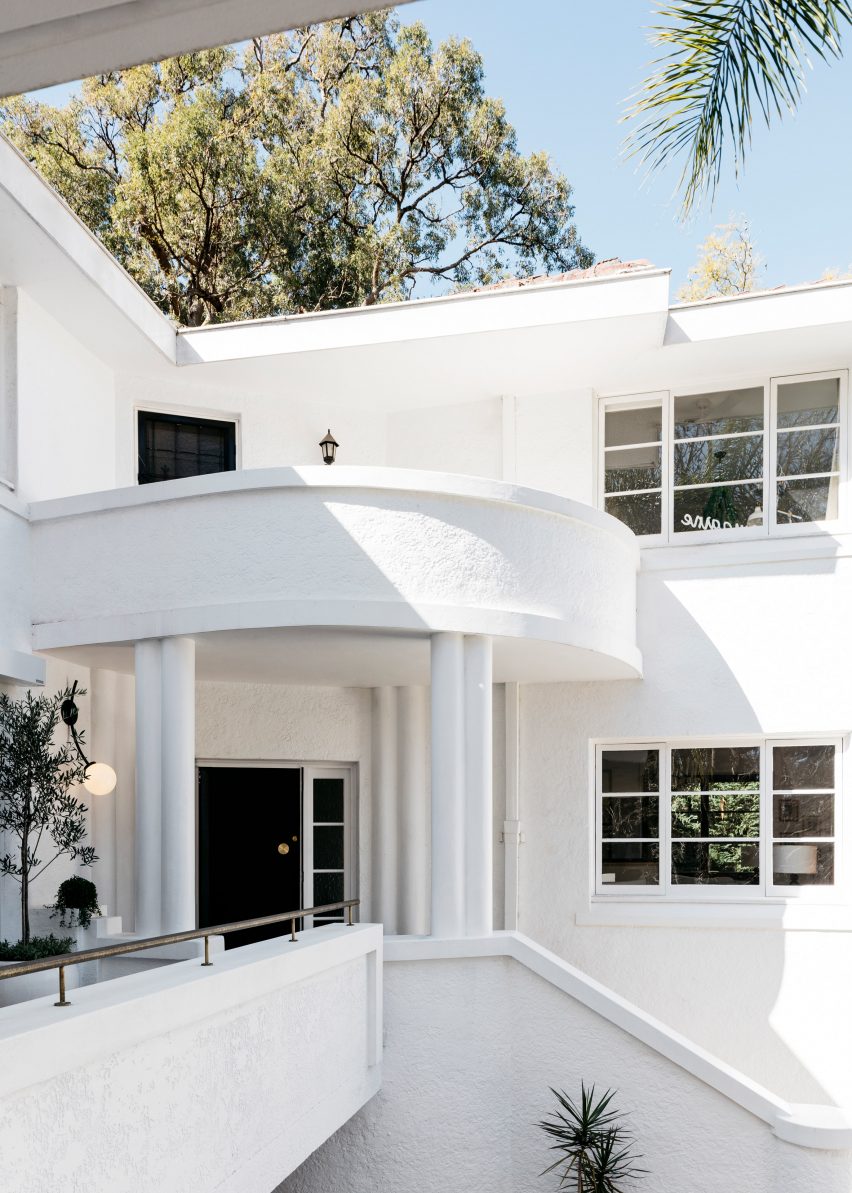
Curatorial House, situated in the city's North Shore area, was built in the style of the early-20th century movement P&O. The style, which takes its name from the Pacific and Orient cruise line, is characterised by white-painted and curved facades intended to emulate the appearance of luxury ships that were popular during the period.
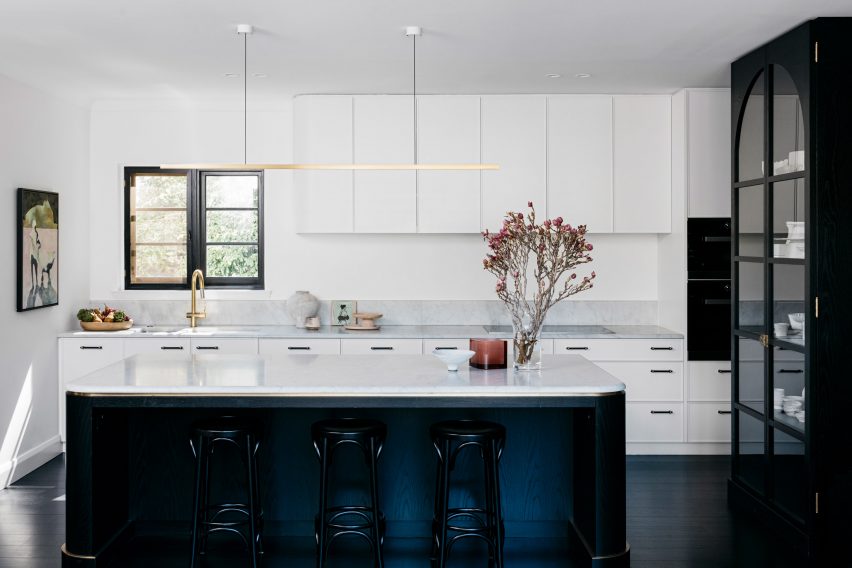
Its owners – a gallery owner, her husband, and four children – approached local interior design studio Arent & Pyke to give the home a contemporary overhaul that would aesthetically tie together its original 1930s structure and an extension that had been added in the 1980s.
"The design considers the foundational elements through carefully considered weights and balance, "Sarah-Jane Pyke, co-founder of the studio, told Dezeen."[It] respectfully nods to the glamour of the era and avant-garde nature of the P&O movement."
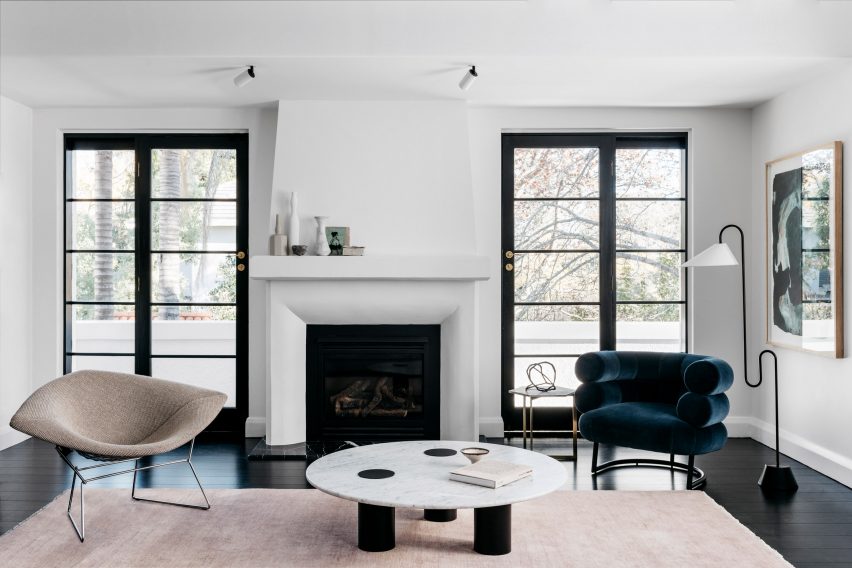
The studio began by applying a monochromatic scheme throughout the home to visually unify its living spaces, completing walls in white and timber floorboards in starkly contrasting black. The designers also hoped the restrained palette would "allow [the client's] artworks and furnishings to speak volumes".
With the help of Sydney-based architect Luke Moloney, the designer then went about making a handful of structural changes to the home.
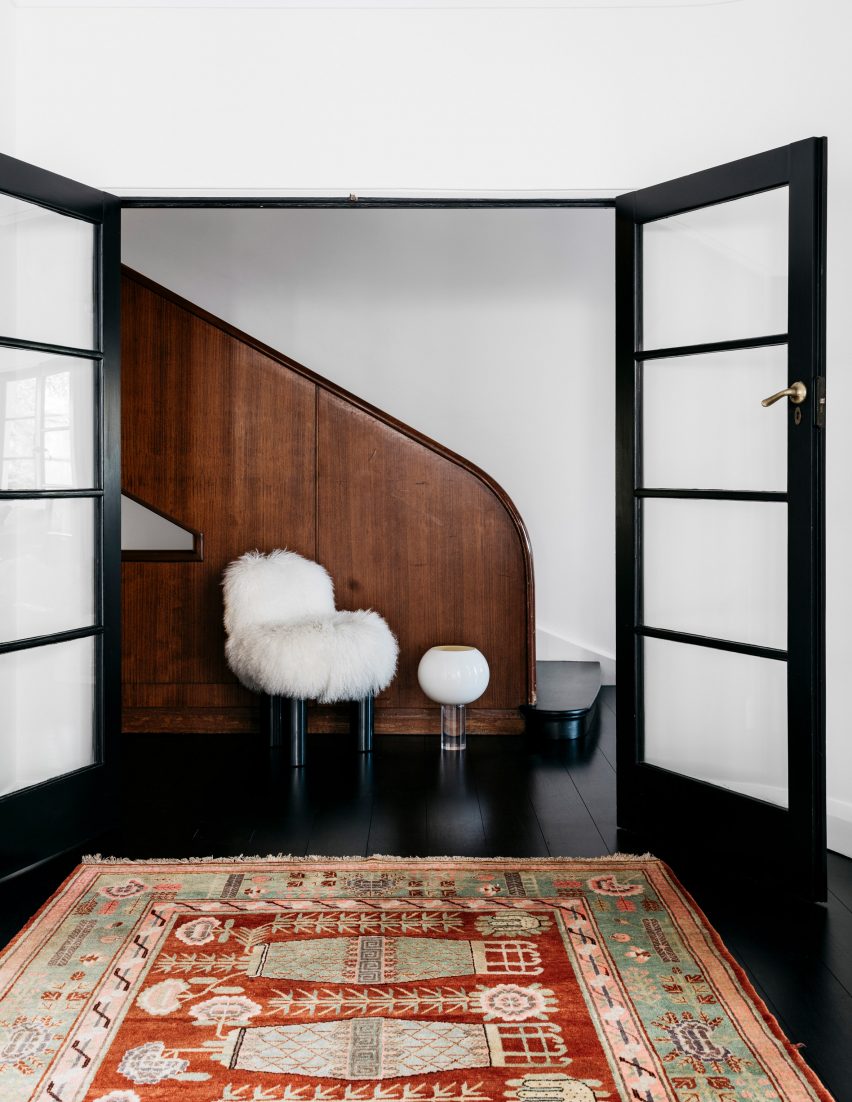
The kitchen, which had previously been sat at the rear of the home with little access to natural light, has been moved to the centre of the ground floor to serve as the main family gathering point. It now features a marble-topped breakfast island, pale cabinetry and a full height display unit for crockery.
The designers then decided to introduce a fireplace to the home's living area to make it feel more warm and welcoming. A balcony has also been constructed at the front of this room to create a better visual connection towards the property's sizeable garden and outdoor pool.
Patterned white tiles have been paired with a mirrored wall in the first-floor bathroom to give the illusion of extra space.
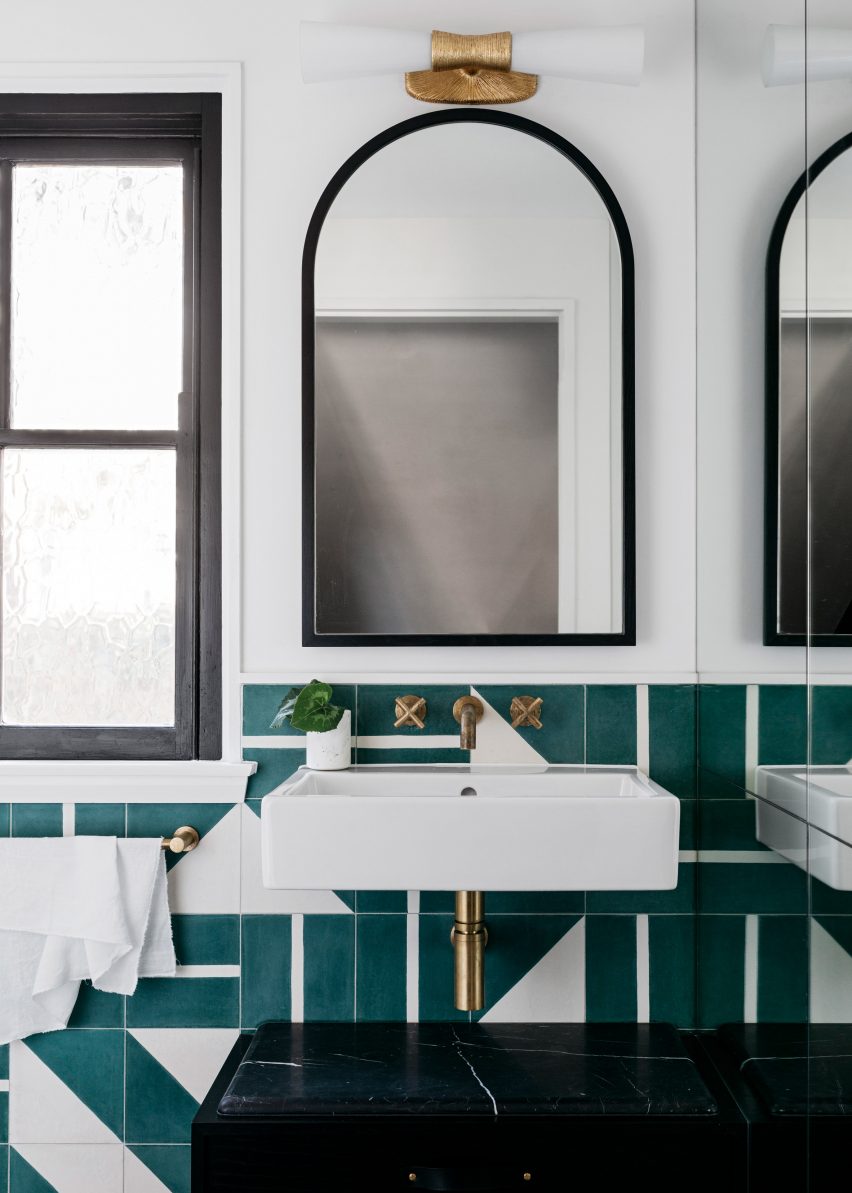
Melbourne-based practice B.E. Architecture recently renovated an art collector's Victorian-era dwelling in the city's Albert Park suburb, employing a host of contemporary materials to help distinguish old and new parts of the building.
Photography is by Felix Forest.